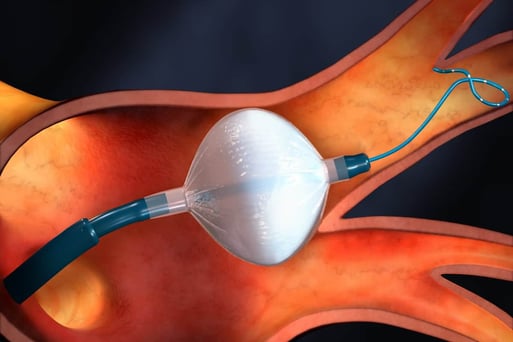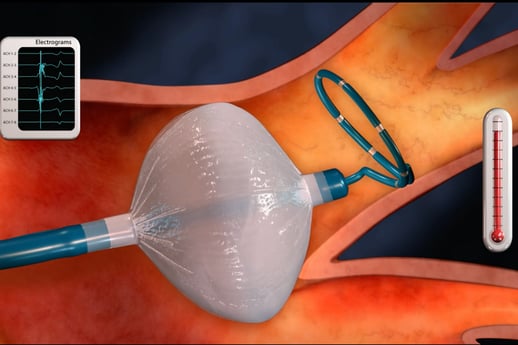Atrial fibrillation, or AF, is a quivering or irregular heartbeat. Left untreated, AF gets worse over time. Medications and procedures can reset or control the heart’s rate and rhythm to prevent irregular heartbeat and reduce risk for stroke for many people. These measures are not enough for some patients, however. When medications are not enough, patients may benefit from cardiac ablation.
Cardiac ablation destroys the tissue producing the unpredictable electrical signal. Ablation directs energy at the pulmonary vein, where it connects to the left atrium of the heart. This energy creates lesions that cause the tissue to scar over, preventing the erratic signals from ever reaching the atria.
Heart doctors began using heat-based ablation to treat AF more than a decade ago, but new scientific evidence supports the use of cold therapy for this condition as well. The FDA approved the first cardiac cryoablation catheter in December of 2010.
An electrophysiologist (EP doctor) performs cryoablation to disable the heart cells that cause AF and restore the heart to a normal rhythm. Cryoablation is a minimally invasive procedure in which the EP doctor uses a thin flexible tube, known as a balloon catheter, to locate and freeze this heart tissue. Cryoablation is an appropriate treatment for atrial fibrillation when medications and other AF treatments do not restore the heart to a normal rhythm.
The Arctic Front Advance Cryoballoon (click image to enlarge)
Heat-based ablation uses radiofrequency energy to disable the heart cells causing arrhythmia. Cryoablation uses the power of cold to disable these cells. The primary advantage to using cold rather than heat is that doctors can cool tissue enough to determine that it is the area of cells causing the irregularity before permanently disabling the tissue. If doctors determine they have disabled the incorrect cells, they can return normal function to the cells simply by allowing the tissue to warm back up. An EP doctor cannot reverse the tissue damage caused by heat ablation.
When it comes to disabling damaged tissue, using cold has several other advantages over using heat. Cold temperatures are less likely to affect healthy heart tissue or other nearby structures. Research shows cryoablation to be significantly more effective than medication. Best of all, patients usually experience less pain with cryoablation than with another type of AF treatment, known as radiofrequency ablation, that uses radio waves.
Your EP doctor inserts the balloon catheter into a blood vessel, usually in the upper leg. Using advanced imaging techniques for guidance, the EP then threads the tube through the patient’s body until it reaches the heart.
Once the catheter reaches area of the heart that opens to the pulmonary vein, the electrophysiology doctor directs extreme cold energy through the catheter directly onto the small amount of heart tissue causing the erratic electrical signals. The heart then returns to a healthy rhythm.
The success rate of cryoablation for the treatment of AF is generally very good. Success depends on a variety of factors, such as the duration of atrial fibrillation, the presence of any other heart problems such as valve disease or coronary artery disease, the size of the atria, and the type of atrial fibrillation.
As with any medical procedure, complications can occur. Possible complications include perforation of the heart, stroke, heart attack, and narrowing of the pulmonary veins. Bleeding may occur at the catheter entry site in the leg. Your EP doctor will discuss your risk for complications during your office visit prior to the procedure.
Make an appointment with electrophysiologist Dr. Lawrance jeuraj for more information about cryoablation to treat your atrial fibrillation.
If you believe you may be suffering from a heart rhythm disorder, speak to your doctor about visiting cardiac electrophysiologists of Heart Rhythm Consultants for more information, testing and treatment options, including ablation therapy.





